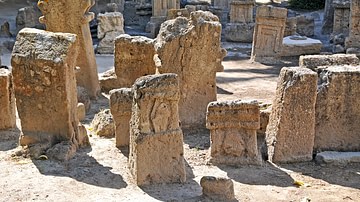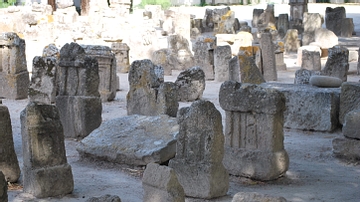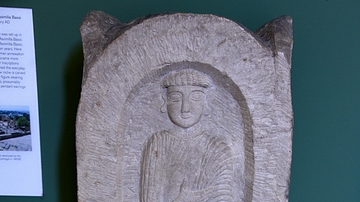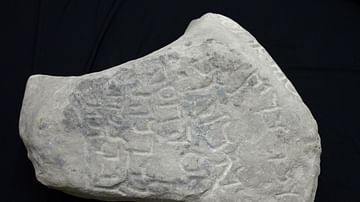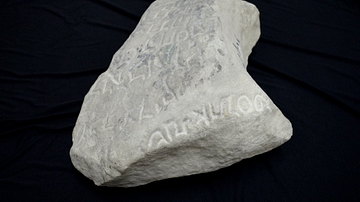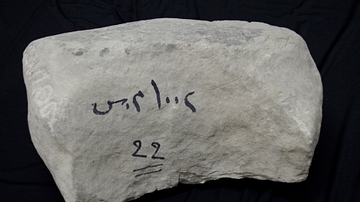Illustration
This limestone monument was set up in a cemetery in Carthage, in memory of a man called Gemellus. The inscription towards the base is written in Phoenician, the native language of ancient Carthage, often known as Punic, and states "This tombstone has been set up for Gemellus, son of Selidius. He lived fifty years". Monuments like this were originally set up in tophets, open-air children's cemeteries. They showed where urns containing the cremated remains of new-born infants and children had been buried. Following the destruction and annexation of Carthage by the Romans in 146 BCE, the practice was more widely adopted and extended to mark adult burials which had not previously been commemorated in this way. From Carthage, modern-day Tunisia. Punic, 2nd to 3rd century CE. (The British Museum, London)
About the Author
Cite This Work
APA Style
Amin, O. S. M. (2016, June 16). Carthaginian Tombstone for Gemellus. World History Encyclopedia. Retrieved from https://www.worldhistory.org/image/5213/carthaginian-tombstone-for-gemellus/
Chicago Style
Amin, Osama Shukir Muhammed. "Carthaginian Tombstone for Gemellus." World History Encyclopedia. Last modified June 16, 2016. https://www.worldhistory.org/image/5213/carthaginian-tombstone-for-gemellus/.
MLA Style
Amin, Osama Shukir Muhammed. "Carthaginian Tombstone for Gemellus." World History Encyclopedia. World History Encyclopedia, 16 Jun 2016, https://www.worldhistory.org/image/5213/carthaginian-tombstone-for-gemellus/. Web. 20 Apr 2025.



